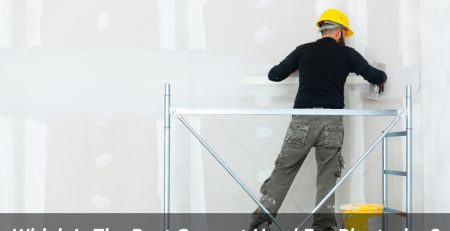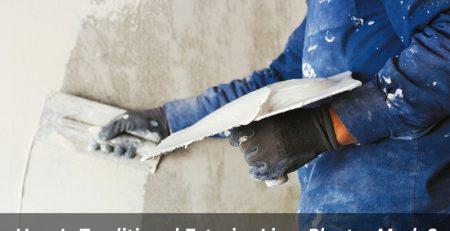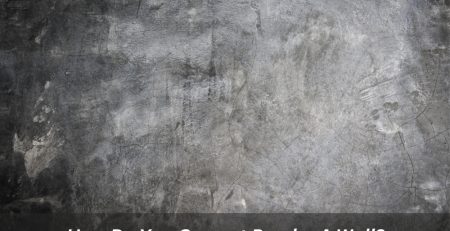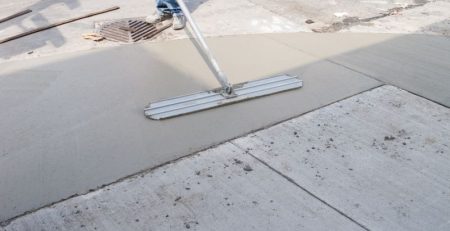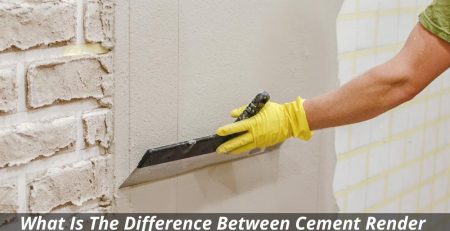Is Waterproofing Chemical Required For Cement Plastering?
When constructing a building or a home, finishing walls and ceilings with plaster cement is a common practice. However, to ensure that the plastering lasts for an extended period, it is essential to protect it from moisture and water damage. This is where the question of whether waterproofing chemicals are required for cement plastering arises.
It’s important to note that there is a difference between cement render and plaster, and each requires specific techniques and materials. Regardless of whether you are using cement render or plaster, waterproofing chemicals are crucial to prevent water damage and increase the longevity of the finish. In this blog post, we will explore the importance of waterproofing chemicals in cement plastering and discuss the benefits of using them.
What is the purpose of waterproofing chemicals?
Waterproofing chemicals are an essential component in ensuring the longevity of walls and ceilings, both for interior and exterior applications. When the plaster is applied, it serves as the final coat that provides a smooth finish to the wall surface. A plaster finish system usually consists of a few coats of plaster, including the base coat, which is made up of portland cement plaster and a fine aggregate, and the finish coat, which is a mixture of cement and sand.
The quantity of water used in the plastering process plays a crucial role in the final result. Too much water can weaken the plaster, resulting in a brittle and flaky surface. This is where waterproofing chemicals come into play. They are added to the mix to improve the plaster’s durability and resistance to water damage.
For exterior walls, the thickness of the plaster is important in determining the level of insulation provided. In addition, exterior insulation can also be applied to improve energy efficiency.
When it comes to wall plastering, a single coat of plaster is often used for internal plastering, while two or more coats are applied for external walls. Regardless of the number of coats, waterproofing chemicals can be added to all layers to enhance their resistance to moisture.
In summary, the purpose of waterproofing chemicals is to improve the durability and resistance to water damage of walls and ceilings. They are added to the plaster mix to protect the surface from moisture and ensure a long-lasting finish.
What are the different types of waterproofing chemicals, and how do they work?
There are various types of waterproofing chemicals available on the market, each with its unique properties and applications. Some of the most common types of waterproofing chemicals include:
-
Acrylic Polymer
Acrylic polymer is a water-based waterproofing chemical that is often used for interior and exterior applications. It is typically mixed with sand and water to form a paste that is applied to the surface. Once dried, the acrylic polymer creates a thin, flexible film that repels water and prevents moisture from penetrating the surface.
-
Cementitious Waterproofing
Cementitious waterproofing is a mixture of cement and other additives that are applied to the surface in a thick layer. When mixed with water, the cement forms a thick paste that can be applied to a variety of surfaces, including concrete, masonry, and metal. Cementitious waterproofing works by creating a barrier that prevents water from penetrating the surface.
-
Bituminous Coating
Bituminous coating is a waterproofing chemical that is often used for roofs, foundations, and other surfaces that are exposed to the elements. It is made from a mixture of bitumen and other additives that form a thick, flexible coating when applied to the surface. Bituminous coating works by creating a barrier that prevents water from penetrating the surface.
-
Polyurethane
Polyurethane is a two-component waterproofing chemical that is often used for flat roofs, balconies, and other surfaces that are exposed to the elements. It is typically applied in a liquid form and cures to form a flexible, waterproof membrane. Polyurethane works by creating a seamless, waterproof barrier that is resistant to water and other elements.
In conclusion, waterproofing chemicals can be mixed with sand and water to form a paste that is applied to the surface or applied as a liquid that cures to form a waterproof barrier. The different types of waterproofing chemicals work in different ways to prevent water from penetrating the surface and protect it from moisture damage.
What are the benefits of using waterproofing chemicals for cement plastering?
Using waterproofing chemicals for cement plastering offers several benefits, including:
-
Protection against water damage
One of the primary benefits of using waterproofing chemicals is that it protects the plastered surface from water damage. Without waterproofing, water can penetrate the surface and cause damage such as cracking, peeling, or discolouration.
-
Increased durability
Waterproofing chemicals enhance the durability of the plastered surface, making it more resistant to wear and tear. This is particularly important for exterior applications, where the surface is exposed to the elements.
-
Improved aesthetics
Waterproofing chemicals can also improve the appearance of the plastered surface. By preventing water damage, the surface remains smooth and free from cracks or discolouration, which can improve its overall aesthetics.
-
Enhanced energy efficiency
For exterior applications, adding waterproofing chemicals can improve the insulation provided by the plastered surface. This can help reduce heat loss during the winter and improve energy efficiency.
-
Long-term cost savings
Using waterproofing chemicals can help reduce long-term maintenance costs by preventing water damage and extending the life of the plastered surface. This can be particularly beneficial for larger projects where regular maintenance or repairs can be costly.
Using waterproofing chemicals for cement plastering can offer a range of benefits, including protection against water damage, increased durability, improved aesthetics, enhanced energy efficiency, and long-term cost savings.
Overall, the use of waterproofing chemicals is essential for cement plastering. Cement plastering without waterproofing is vulnerable to moisture damage, which can cause cracks, deterioration, and compromise the overall appearance and durability of the plaster. Waterproofing chemicals provide protection from moisture, increase the durability and longevity of the plaster, improve its aesthetic appeal, and even enhance energy efficiency. Therefore, it is necessary to use waterproofing chemicals when plastering cement surfaces to ensure a long-lasting and high-quality finish.
Contact Jims Rendering Sydney today for any assistance with rendering cement surfaces and using waterproofing chemicals. We provide high-quality rendering services with a focus on customer satisfaction.



